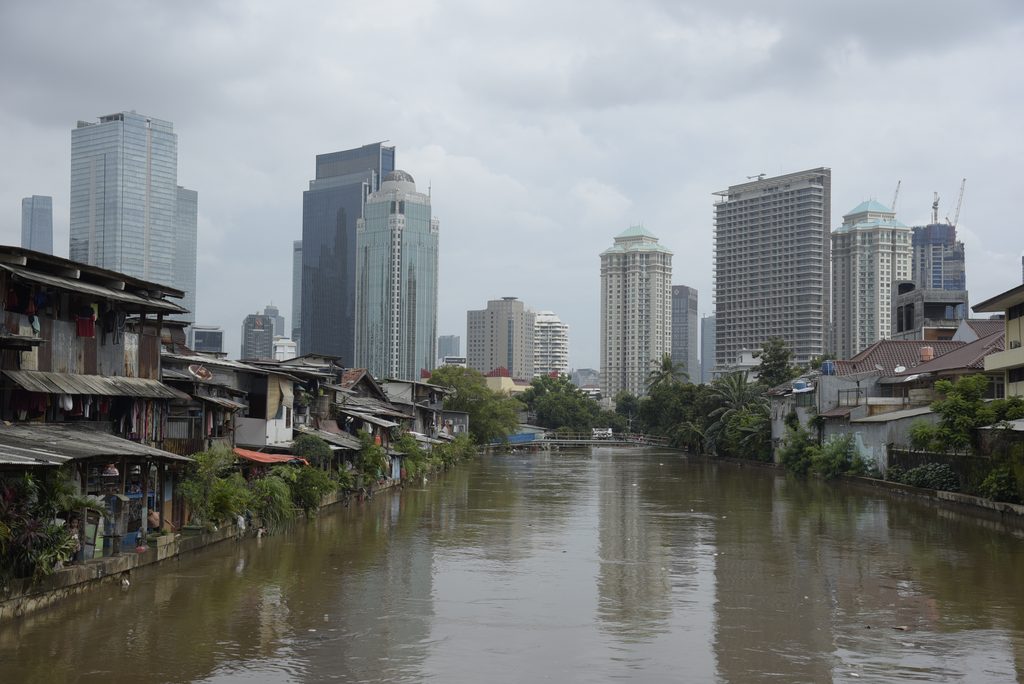We work with companies to better understand their exposure to physical risks.

Key points
- We aim to understand how companies are including physical risks in their risk management.
- We believe many companies may be underestimating the physical risks they face.
Acute and chronic risks
The phrase ‘physical risks’ describes the risks resulting from climate change. Physical risks fall into two categories. ‘Acute risks’ relate to short-term extreme weather events, such as hurricanes, floods, and tornadoes, while ‘chronic risks’ relate to the longer-term changes resulting from temperature increases, including rising sea levels, ocean acidification and various disruptive changes to ecosystems. As investors, it is crucial we understand the evolution of physical risks and assess their potential financial impact on the assets we hold.
Physical risks are widespread
Indonesia’s capital Jakarta, one of the world’s most heavily occupied cities, is also the fastest-sinking city in the world. At the other end of the spectrum, in 2022 a drought affecting the Rhine, Europe’s second-largest river, meant that water levels fell so far that vessels could not navigate parts of the river. An earlier research paper from the Kiel Institute for the World Economy estimated that a month with 30 days of low water levels on the Rhine reduces German industrial production by c.1%.1 Last year, low water levels on the Mississippi forced barge companies to stop taking orders for immediate delivery, meaning that many companies were forced to pay a premium to move commodities by rail or truck instead.2
Climate change is also predicted to have a huge impact on future food production. Over the 21st century, most of Europe is expected to experience substantial agricultural production loss. North America is also predicted to see a redistribution of food production and intensification of production losses of key crops, livestock and fisheries. Asia is predicted to see an increase in malnutrition caused by food availability and the price of food.3
Another impact of extreme heat is lost productivity. Research shows that 3.6% of productivity is lost from temperatures above 30°C and an additional 8% is lost on days over 35°C.4
Physical risk is already having a pronounced financial impact on many businesses, be they affected by transport problems, supply-chain disruption, loss of productivity or increased absenteeism. There are also higher capital costs to consider, including potential damage to facilities and stranded assets. These risks could lead to higher insurance premiums and less insurance for assets in high-risk locations.
Pinpointing physical risk
We use external data models5 as a starting point when attempting to gauge the future impact of physical risks on the assets we hold. These models translate physical risks into discounted costs up to the year 2100. Owing to a lack of data, only the first 15-year period is based on company-specific modelling; after that, sector-specific data is applied. There are limitations and uncertainties with these models, and the resulting predictions are likely to be imperfect.
As part of our engagement activity, we will be going deeper. We want companies to explain how physical risks are considered as part of their overall risk-management programmes. As part of this, we will investigate if companies have conducted any scenario analysis and what actions they have taken, or plan to take, to mitigate physical risks. We will also examine the insurance that companies have for extreme-weather events, we consider any adaptation plans that are in place, and we delve into the supply-chain risks companies face.
Based on our work so far, we believe many businesses are underestimating the likely cost of, and are unprepared for, the physical risks they face. Therefore, we expect engagement relating to physical risks to be an important aspect of our activity in 2023 and beyond.
Sources:
1 Extreme weather events and economic activity: The case of low water levels on the Rhine river, Keil Institute for the World Economy, April 2020.
2 Mississippi Barge Backup Stalls Millions of Tons of Cargo, Bloomberg, 7 October 2022.
3 Climate Change 2022: Impacts, Adaptation and Vulnerability IPCC, Sixth Assessment Report.
4 MSCI Climate VAR Methodology Part 4 – Physical Climate risk.
5 MSCI using the GCAM average scenario and IMAGE aggressive scenario both under 2 degrees.
This is a financial promotion. These opinions should not be construed as investment or other advice and are subject to change. This material is for information purposes only. This material is for professional investors only. Any reference to a specific security, country or sector should not be construed as a recommendation to buy or sell investments in those securities, countries or sectors. Please note that holdings and positioning are subject to change without notice. Newton manages a variety of investment strategies. How ESG considerations are assessed or integrated into Newton’s strategies depends on the asset classes and/or the particular strategy involved. ESG may not be considered for each individual investment and, where ESG is considered, other attributes of an investment may outweigh ESG considerations when making investment decisions. ESG considerations do not form part of the research process for Newton's small cap and multi-asset solutions strategies.





Comments